The 10 greatest synthesizers of all time
Especially for Synth Week 2022. We make our pick of the 10 most influential electronic instruments in history
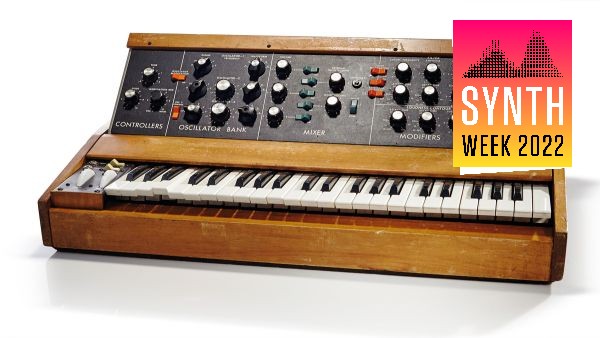
SYNTH WEEK 2022: Welcome to Synth Week 2022 here on MusicRadar. Our week-long celebration of the hardware and software that makes great synth music possible.
Every day we review the very latest music-making kit but what about the classics? What money-can't-buy solid gold gems have paved the way for the music kit we see today?
These are the synths we're celebrating right here, as we count down the 10 best synths of all time. Needless to say we argued and wrangled over our final ten but we think we've nailed it.
Some are classy, some are quirky and all of them still worth a look, either in genuine original hardware form or in up-to-date in-the-box software form. If you own one of these instruments for real, then you can count yourself among those insightful enough to recognise a Very Good Thing when you saw one.
Let the countdown begin!
10. Oberheim OB-Xa
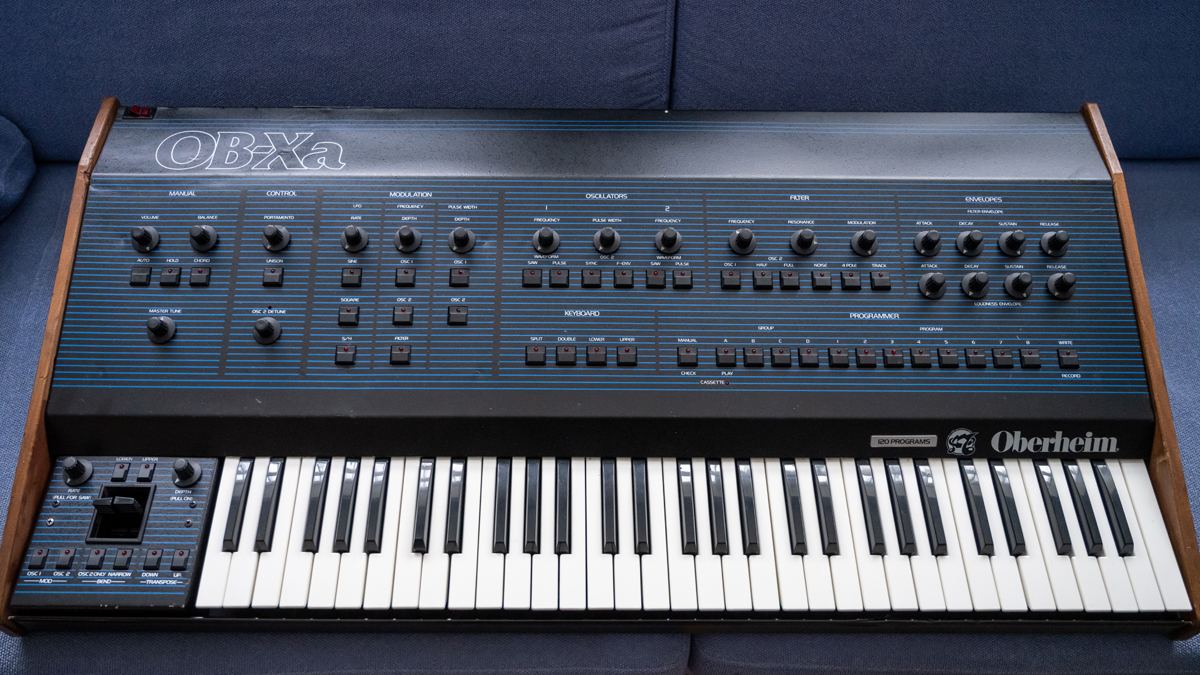
The success of Sequential Circuits' Prophet-5 shook the synth industry. Monosynths were declared dead almost overnight, and if your synth couldn't store sounds, you might as well have scrapped it for parts.
Every manufacturer that could afford to do so began pumping out competitive products. Some attempted to bring the cost of programmable polyphonic synthesizers down, while others, like Oberheim, attempted to put their own stamp on 'em.
Get the MusicRadar Newsletter
Want all the hottest music and gear news, reviews, deals, features and more, direct to your inbox? Sign up here.
Oberheim had, in reality, been there before Sequential. It offered polyphony in the form of its OB Four and Eight Voice instruments, achieved by strapping a handful of its S.E.M. modules into a case, attaching a keyboard and expecting the user to identically tweak each individual S.E.M. There was even a rudimentary programmer available that could store some (but not all) of the parameters for later recall. They sounded immense, but they were difficult to manage, to say the least.
Oberheim had a bit of a re-think after the Prophet-5 whizzed by, and took the best of its previous designs and combined them into the huge OB-X. It worked a treat and begat a number of follow-ups, each with its own specific qualities and refinements, and each with its own loyal following.
We could have picked the OB-X or OB-8 for our list, but we chose the one smack dab in the middle, the OB-Xa.
Like the OB-X that preceded it, the OB-Xa was available in four-, six- or eight-voice versions and sported a somewhat simplified dual oscillator signal path. The OB-Xa, however, added a 24 dB filter to the OB-X's 12 dB job and, in fact, you could create layered sounds that combined both for a more complex and engaging sound.
And what a sound it was. The OB-Xa may be the single phattest sounding instrument we have ever heard. Users who dare to click that Unison button may have to have their teeth re-enamelled. Yeah. It's big.
As with all Oberheim instruments of the time, the OB-Xa could be lashed together with a DMX or DX drum machine and a DSX sequencer to form a complete Oberheim 'System'. Such a System in full swing was a sight to behold in those pre-MIDI days, a technological wet dream that was far out of reach of all but the most successful musicians of the day.
Emulations: Arturia's Oberheim OB-Xa V is a thorough plugin recreation, and there's also the free OB-Xd from discoDSP. Behringer is also working on a hardware clone.
9. Roland JD-800
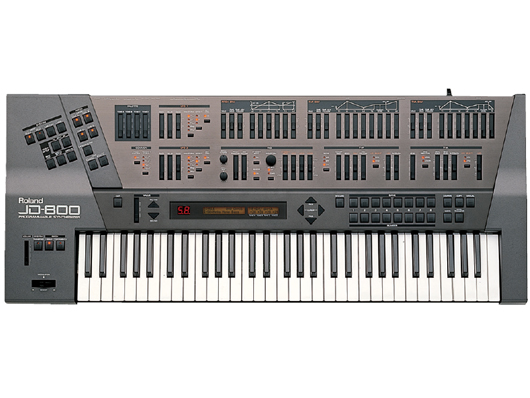
It was a difficult decision, putting the JD-800 on the list in lieu of the massively popular D-50. The latter is arguably the classic between the two and represented a major shift in Roland's approach to instrument design and sales. Yet the JD-800 was, frankly, a far better instrument.
Like the D-50, the JD combined sample-based oscillators with a fairly typical signal path that included a resonant filter, envelope generators and the like. However, the JD-800 offered something not available on any other sample-based synthesizer: a bucket load of sliders. Yep, the JD harkened back to the analogue era, offering scads of real-time control (that, alas, could only be transmitted via SysEx). It was big, impressive and utterly sexy, even if it was made mostly of plastic.
More than that, it sounded out-of-this-world. At a time when manufacturers were doing their best to cram as many grainy 8-bit low-rate samples into an instruments' ROM as possible, Roland used only hi-res stuff, resulting in outstanding sound quality.
Alas, the JD-800 was released a decade too soon. The analogue revival was still years off and sales fizzled (at least by D-50 standards). However, Roland knew what it had, and the technology behind the JD-800 would pop up again and again in its best-selling series of rack-mountable MIDI modules.
Emulations: There are no straight emulations of the JD-800, but Roland's JD-XA could be seen as a spiritual successor.
8. Yamaha CS-80
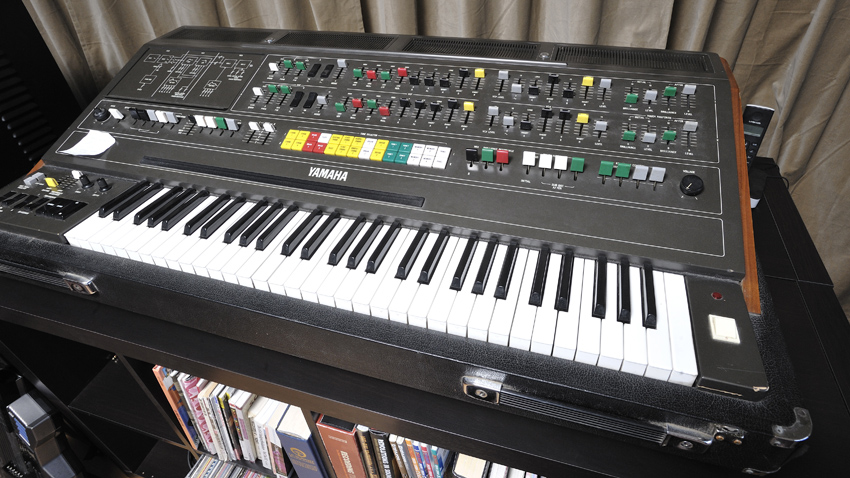
Everything about the CS-80 was big. Physically, it was a massive beast, weighing in at over 200lbs. It has a huge, garish front-panel, festooned with rocker buttons, sliders and the single best ribbon controller ever devised.
Eight voices of polyphony, aftertouch and distinct ring modulation were among the features on offer when the CS-80 was released in 1976. Quirky and cantankerous, it was possessed of a sort of pseudo-programmability in the form of a trap door that hid most of a miniature front panel and could be set up before your show. If you dared take the thing to a gig, that is.
It was also hugely unstable, with analogue oscillators that drifted at every opportunity. Too hot? Too cold? Bang out of tune. Too humid? Forget it. Need to move it? Nope. The mere act of tipping it on end to wheel it about on its casters would throw it out of whack.
If you were one of the lucky few who had a stable CS-80 (or could afford to hire in for the intimidating calibration process), you would have been able to avail yourself of a device capable of unparalleled expression. The CS-80 felt like a real instrument. It could be made to bend to your mood and will. It responded beautifully to aftertouch. The CS-80 could scream like a banshee, cry plaintively, or tap out a pattern as delicate as rain on a stained glass window.
We've recently seen one going for over 10,000 smackers and you know what? The buyer is going to get their money's worth.
Emulations: The Deckard's Dream MK2 is undoubtedly inspired by the CS-80, and Yamaha has indicated that it may be thinking of revisiting the instrument in some form. Inevitably, there's also been talk of a Behringer clone.
On the software side, look no further than Arturia's CS-80 V.
7. Korg Wavestation
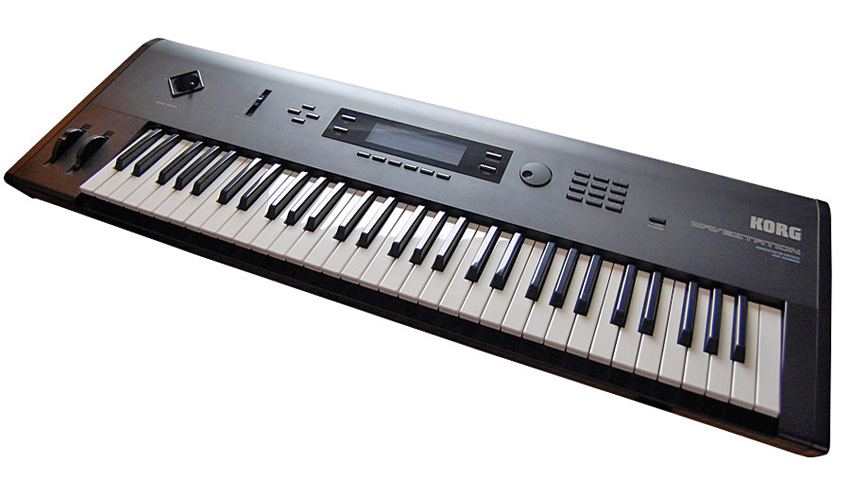
To understand the pull of the Wavestation, you have to take yourself back to 1990. Analogue was dead and FM was on life-support. Sample-playback instruments had taken hold and the biggest sellers of the day were seen as little more than glorified organs, capable of calling up a reasonably convincing sampled ensemble for the Holiday Inn crowd: "Thank you ladies and gents, I'll be here all week. Don't forget to tip your waitresses".
It was into this very environment that Korg dared to release the Wavestation. The product of a US-based team of designers rescued from the now-defunct Sequential Circuits, the Wavestation shared the vector synthesis of Sequential's Prophet-VS.
The onboard samples were of a decidedly electronic nature, with none of the usual drum kits, pianos or nylon guitars (for the moment, anyhow). They could be stacked, layered, filtered and processed by a still-impressive selection of effects. Better still, you could crossfade and blend your sounds with the joystick mounted above the pitch and mod wheels.
That might have been enough to shake synthesists out of their doldrums, but it was the inclusion of wavesequencing that tipped the scales. The Wavestation gave users the ability to string any of the onboard waveforms together in a row with individual control over pitch, volume, and crossfade time.
Using this technology, it was a breeze to fashion sounds that shifted and evolved over time. Complex rhythmic passages could likewise be created. It was, and is, brilliant, though it is seen as being difficult to program. Fortunately, there are software editors available for the thing even to this day, not to mention an utterly convincing virtual incarnation from Korg itself.
Emulations: Korg has released both desktop and iOS versions of the Wavestation, while the Wavestate hardware synth nails its sound while being very much a new instrument.
6. Yamaha DX7
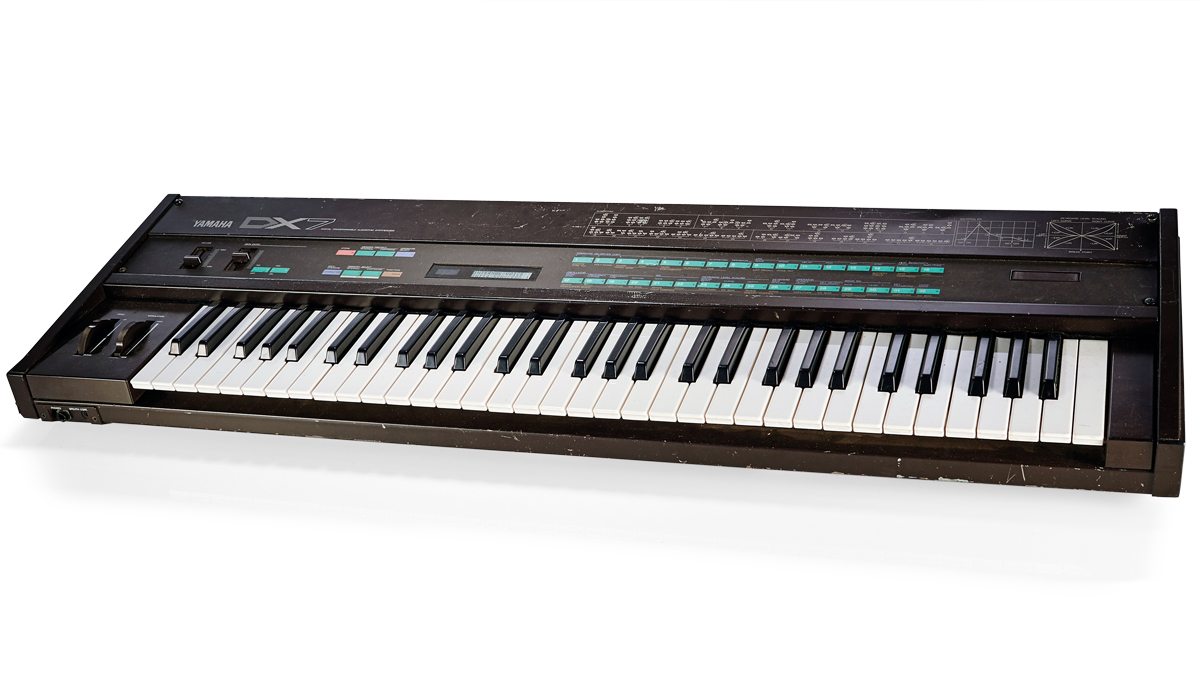
In this age of retro-fetishism, it can be hard to believe that musicians might once have grown weary of analogue synthesizers. Yet, as the 1980s kicked into gear, that is precisely the mood that had settled into the electronic music industry.
After over a decade of nothin' but analogue, musicians were looking for that Next Big Thing, and a mega-corporation just happened to have been working on exactly that. It was dubbed the DX7 and it shook the entire music world upon its release in 1983.
Offering a then-staggering 16 voices of polyphony, a full-sized, velocity and aftertouch capable keyboard, the DX7 was different on the outside as well as under the hood. You see, the DX7 was the first mass-produced instrument to make use of FM synthesis, a technique devised by John Chowning at Stanford and licensed by Yamaha.
Unlike the familiar analogue-style FM seen on a few semi-modular instruments, Yamaha's variant of FM was no mere effect; it was the core of the instrument's architecture, and it left some old hands scratching their heads. In fact, the DX7 quickly earned FM synthesis a somewhat undeserved reputation for being difficult to program, giving birth almost single-handedly to the third-party sound design industry in the process.
Truth be told, FM isn't too difficult to fathom; it simply wasn't much fun to patch one parameter at a time and with very little visual feedback. For better or worse, the DX7 also ushered in the era of menu-driven synthesis, thanks to its spartan front panel and diminutive display. Yet those who programmed the thing discovered a wealth of new and exiting timbres.
The DX7 could be cold, clear and crystalline. It was capable of crisp percussive timbres and hard-as-nails basses. The sounds could be quite lively, too, if you were one of the few who bothered to employ the many real-time controllers, including the much-underused breath control input.
Most users, however, contented themselves with the numerous presets. From the now-famous electric pianos to the overused harmonica (!), the DX7 quickly became ubiquitous, selling in numbers that had been heretofore unheard of for a synthesizer. It's easy to slag it off today, but it was a breath of fresh air back in '83, and revitalised (and to an extent commercialised) the synthesizer industry.
Emulations: Yamaha has the cute Reface DX, while Korg offers the even dinkier Volca FM. If you want a plugin, Arturia has obliged once again with the DX7 V, and there's also Native Instruments' evergreen FM8.
Penny-pinchers should try the free Dexed on PC and Mac or AudioKit's FM Player 2, a DX synth for iPad.
5. ARP 2600
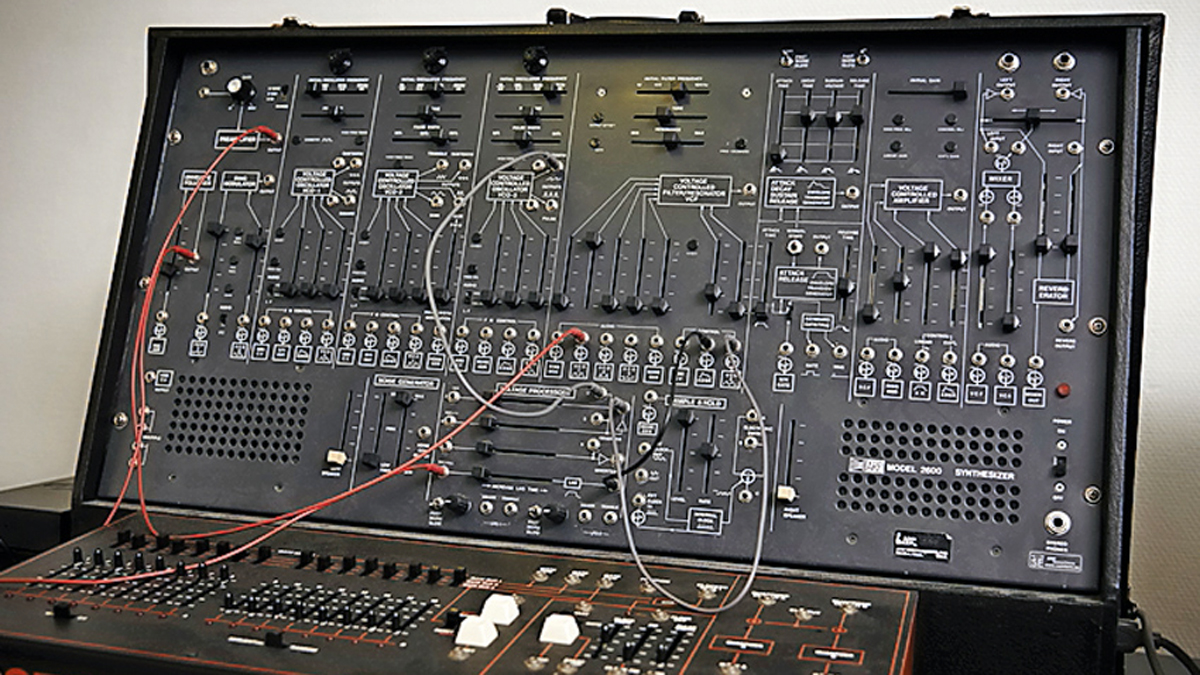
If the Minimoog was designed to simplify modular synthesis for mass consumption, then the ARP 2600 was created to haul the whole kit and caboodle into the hands of performing musicians. Rather than limit the options with a written-in-stone signal path as Moog did, the 2600 presented a fully patchable instrument in a fairly compact package.
Offering three oscillators, noise, filter, ring mod and reverb, the 2600's fixed signal path could be defeated by patching cables into just about any point in the instrument's architecture. This meant that it was as complex as you needed it to be. Respectably complex patches could be created without plugging in a single cable, but once you chose to do so, the sky was the limit. We've heard 2600s producing everything from pseudo sequences to full on drum beats, complete with swing.
The 2600 was given a leg up by its stable oscillators, and early models benefited from a filter that was all-too-similar to Moog's (at least as far as Moog's lawyers were concerned). The 2600 went through a number of revisions over the years, from its initial blue metal incarnation through the more numerous tolex-encased units to the final gaudy black and orange jobs of the early 1980s.
ARP 2600s are trading for silly prices these days. Units that were given away for pennies are selling for many thousands of dollars on the used market. Be careful, though: the earliest models are hard to repair, thanks to ARPs habit of encasing the circuits in epoxy.
Emulations: If you can get hold of one and have the money, you can't beat Korg's ARP 2600 FS (here's hoping for a mini version at some point) and Behringer has its own take on the synth in the works. Arturia has given it the treatment in plugin form.
4. PPG Wave 2.2/3
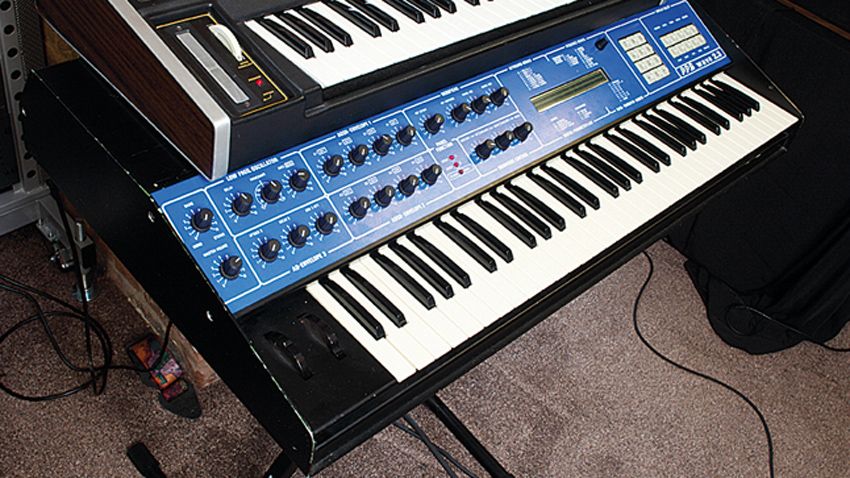
PPG was the vision of one man, Wolfgang Palm. It was his contention that the limitations of analogue oscillators could be circumvented with the use of short, digital waveforms stored in a linear 'wavetable'.
His vision came to fruition as the PPG Wave. Early versions suffered from the resolution of the digital waveforms and the lack of analogue filters, but the technology reached maturity in 1982, with the PPG Wave 2.2.
This big blue marvel combined Palm's digitally stored wavetables with a classic resonant low-pass filter, LFO and a handful of envelope generators. Users could modulate through the wavetables using a variety of mod sources, resulting in a lively, exciting sound quite dissimilar from the analogue synths of the day.
Though the PPG contained a few waveforms drawn from sampled instruments, Palm offered no apologies for its distinctly synthetic flavour. The PPG could turn out spiky basses (think Frankie's Relax) and evocative digital atmospheres. PPG owners who bought the associated Waveterm computer could work up their own wavetables and, in the 2.3 version, even do a bit of sampling. The Wave was a lofty dream machine, costing nine grand or more. As such, it was rarely seen outside of the studios of the rich and famous.
The PPG's legacy can be felt even today. German synth wizards Waldorf continue to mine Palm's wavetable technology, having produced a long line of wavetable instruments starting with the Microwave in 1990. It even produced a virtual version of the PPG nearly a decade ago and the company's current Blofeld and Largo instruments are jam-packed with wavetables lifted from the PPG. Palm, meanwhile, has put his name to a range of PPG-branded iOS and plugin synths.
Emulations: Wolfgang Palm's PPG desktop and iOS apps are now in the hands of Brainworx, and are your best bets if you want an authentic PPG sound.
3. Sequential Circuits Prophet-5
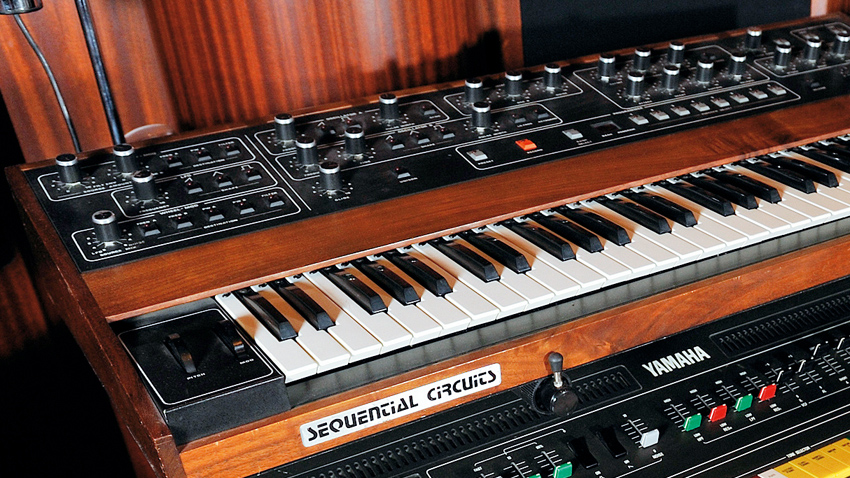
If this were a list of the classiest instruments of all time, the Prophet-5 would be ensconced firmly at the top. With its oiled wood side panels and big, tactile buttons, it looked like it cost a fortune and, well, it did.
Sporting a signal path not unlike that of the ARP Odyssey (two synchable oscillators, noise, low-pass filter, a pair of ADSR envelope generators and an LFO), the Prophet-5 had all of the goods to keep even the most ambitious synthesist happy. However, it also added a wicked Poly Mod section that could be called upon to create some very unusual timbres.
There was a lot to play with and, for the first time ever, any and all tweaks could be written into memory for latter recall. Better still, it offered a full five voices of polyphony. Others might have offered more voices, but none of them allowed full programmability, too. Plus, it sounded nothing short of gorgeous, with a rich, full sound that was ideal for thick, nasal brass, deep, droning pads, burly basses and those searing osc-sync leads.
The Prophet-5 was, in short, exactly what performing musicians were clamouring for and, though it was priced at a whopping four grand, it sold in droves, making Dave Smith's Sequential Circuits an industry leader almost overnight and spawning legions of copycats from every corner of the globe.
The story has a new chapter, too: Dave Smith has now re-taken ownership of the Sequential Circuits name, and has a new synth in the shape of the Prophet-6.
Emulations: Arturia's Prophet V plugin contains not only a Prophet 5 emulation, but also a software reboot of the Prophet VS.
2. EMS VCS3
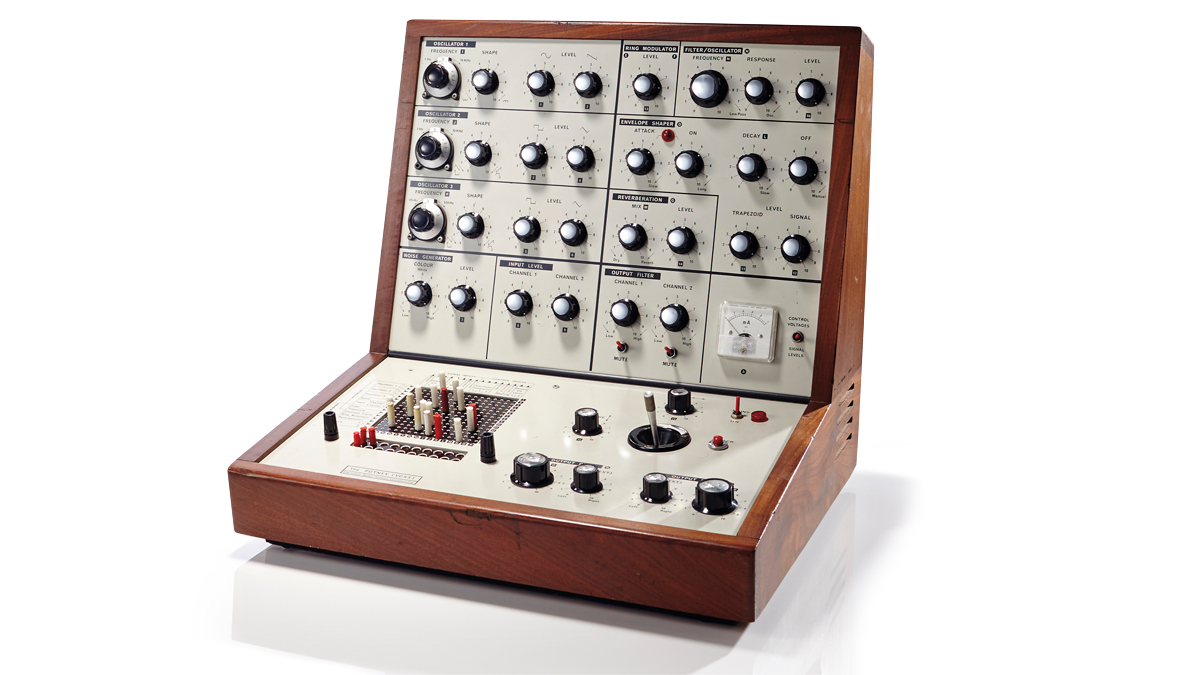
From the Wasp to the OSCar to any number of Novation instruments, the British seem to have a knack for churning out unique, exciting and inspiring instruments, and usually at bargain prices.
It seems hard to think in terms of 'bargain prices' when describing EMS' diminutive VCS3, and yet when it was released in 1969, it was comparatively affordable. Today, they are among the most valuable vintage synthesizers, bringing in over 7k on the used market.
Why are collectors willing to pay so much for a three-oscillator monosynth? History, for one. The VCS3 (and its later, nearly identical cousin-in-a-suitcase, the Synthi AKS) have a strong presence in music history. From Tangerine Dream to Jean-Michel Jarre to Gong and Hawkwind, just about anyone who made an impact on electronic music in the 1970s used an EMS synth.The VCS3, with its stylish, polished L-shaped enclosure, was so hip that every single member of Pink Floyd claimed to play it on the liner notes of The Dark Side of the Moon, even though the uncredited Synthi AKS was quite clearly used for the most significant electronic bits.
Looking like it was pulled from the cockpit of a Mongo Rocketship, the VCS3's design is enough to send a synth boffin into paroxysms of pleasure. Big, colour-capped knobs, a push-pin modulation matrix and a military grade joystick give the instrument a certain air of 'laboratory chic'. It virtually begs you to use it to create weird, atonal avant garde music. Keyboards? Why, chromatic music is so passe! At least its creator, geologist genius Peter Zinovieff thought so, and no such option was available for the first few years of the VCS3's long life.
The VCS3 invites experimentation and its users are happy to oblige. Even veteran synthesists can achieve unexpected results simply by shoving a few pins into the matrix and wiggling the joystick. Just don't expect it to stay in tune. Oscillator stability is not one of the instruments' strong points.
There aren't too many of them around these days, and EMS has, at long last, stopped manufacturing even the small number of specially ordered instruments that kept the company alive for so many decades. If you have one, you don't need us to tell you of its worth. The VCS3 is, quite simply, a marvel.
Emulations: Yet again, Arturia can help you out with the Synthi V, and XILS-Lab has the XILS 3.
1. Moog Minimoog
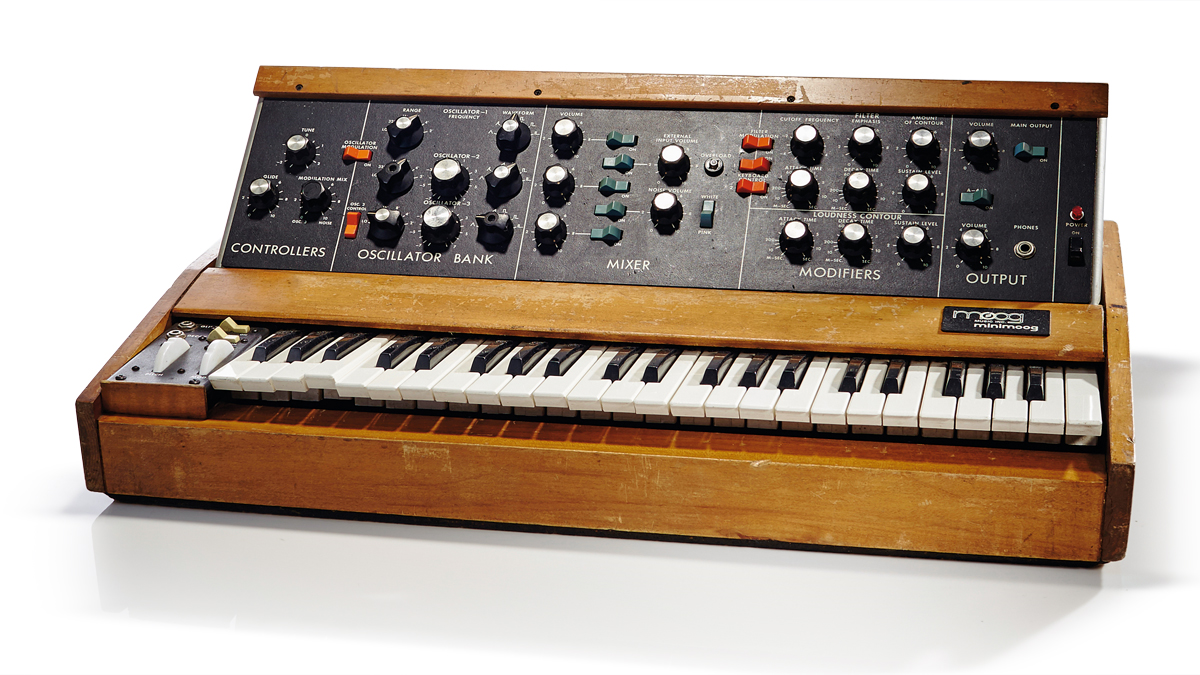
Could it have been any other instrument? The Minimoog is the classic vintage synthesizer and with good reason. Its design is the template that influences synthesizer manufacturers to this day.
With a trio of oscillators (the third of which could be used as a modulation source), noise generator and quite possibly the best sounding filter ever created, the Mini put synthesizers within the reach of the gigging musician. Once they got their paws on the thing, those musicians injected the sound of electronic music into the mainstream.
Thanks to the Minimoog, electronic music was pulled down from its lofty academic perch and allowed to run free among the uncouth and unruly, and thank goodness for that. Maybe we should thank Bill Hemsath, the Moog employee who spent his lunch hours in the attic, kludging together the first Minimoog from bits and bobs from Moog's massive modular systems. He just wanted a portable instrument he could take home. He couldn't have known that he was creating a legend.
What makes the Mini so great? A number of things, actually. First, its relatively limited number of parameters make it pretty easy to use. Yet they were carefully chosen to offer sufficient flexibility to create a wide range of sounds.
Second, there is the sound. Though many instruments are said to be possessed of a special and elusive character, the Minimoog really has it, and then some. The oscillators are rich, and the envelopes are snappy, if simple. Its highs are piercing and crystal clear, and the bass has rightfully become the stuff of legend. It's big, ballsy and its nigh on impossible to make the thing sound bad!
The fact is that neither you or we have ever used a synthesizer that didn't owe something to the Minimoog. Never, ever turn down an opportunity to play one.
Emulations: Where to begin. There are countless plugin Minimoog emulations, and Moog has an official iOS version. Hardware lovers can seek out Behringer's Model D or the Moog-ish Roland Boutique SE-02.


“Excels at unique modulated timbres, atonal drones and microtonal sequences that reinvent themselves each time you dare to touch the synth”: Soma Laboratories Lyra-4 review
e-instruments’ Slower is the laidback software instrument that could put your music on the fast track to success









